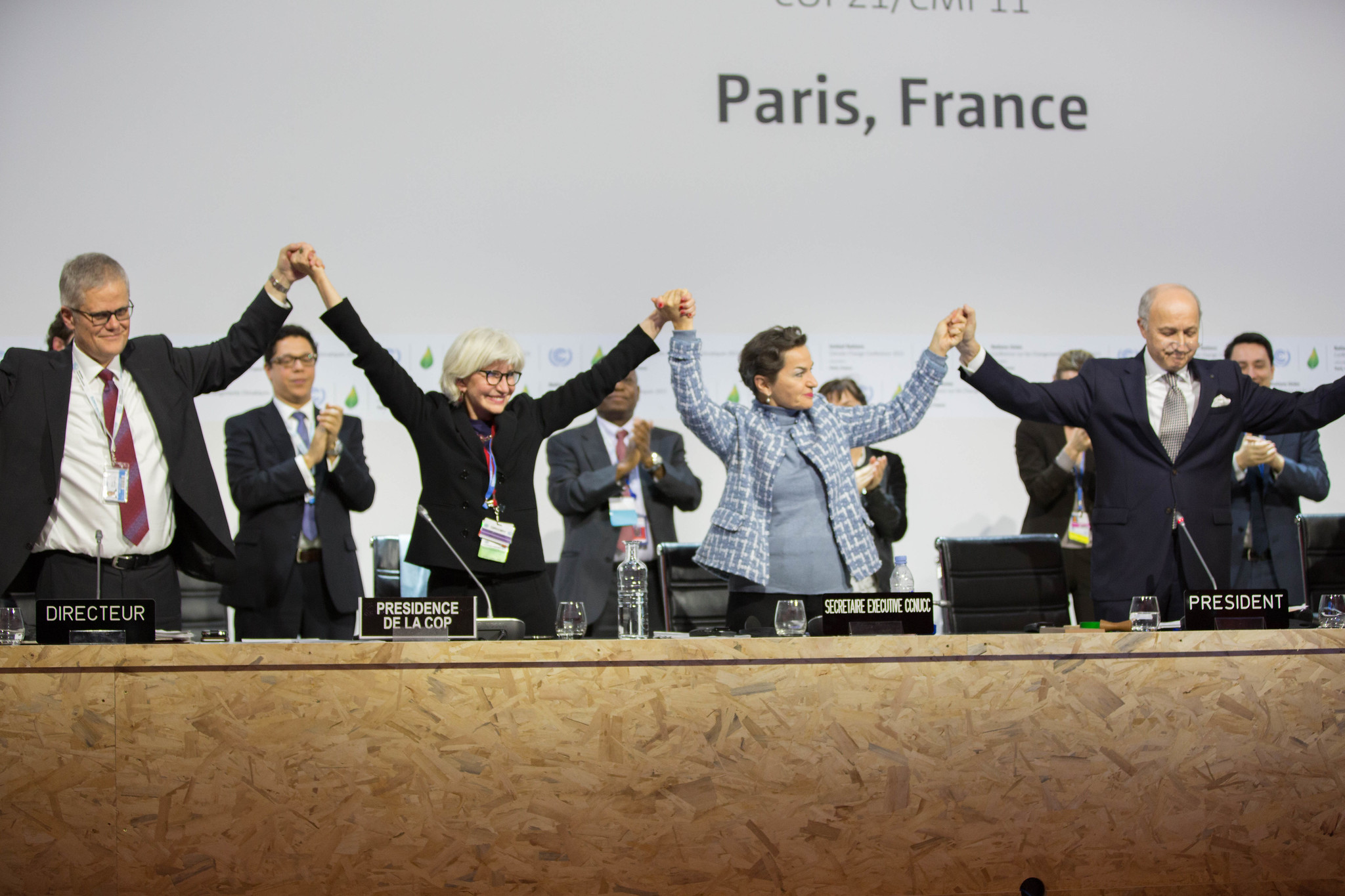The Paris Agreement was signed at the end of the twenty-first Conference of the Parties (COP21) in 2015. The Agreement established a global framework for dealing with climate change. Its goals are holding the increase of the global average temperature to well below 2°C above pre-industrial levels, and making efforts to limit the temperature increase to 1.5°C.
Background: Where the Paris Agreement Originated
The Paris Agreement was ratified at the end of COP21. At the end of each COP, the United Nations Framework Convention on Climate Change (UNFCCC) is signed. This is a document that formalises any agreements reached during the conference’s negotiations. Some of the most famous agreements here include the Kyoto Protocol, the Katowice Rulebook of COP24, and the Paris Agreement.
Why is the Paris Agreement so important and frequently mentioned?
The Agreement sets ambitious goals for combating climate change. This means that its implementation is crucial for achieving the United Nations’ Sustainable Development Goals (SDGs). The Paris Agreement is also the first legally binding climate treaty. The 196 signatories (the Parties) are committed to achieving its goals. Signed on 12 December 2015, the Agreement officially entered into force on 4 November 2016 and was initially adopted by 194 Parties (193 countries and the European Union). As of 2023, 195 Parties have now adopted the Agreement (194 countries and the European Union).
Objectives of the Paris Agreement
The main goal of the Paris Agreement is to reduce greenhouse gas emissions. This is in order to keep the increase of global average temperature below 2°C above pre-industrial levels. The Agreement also seeks to limit the average temperature increases to below 1.5°C. To achieve this, it is necessary for the global greenhouse gas emissions curve to peak as soon as possible and then decline. This will allow the Parties to reach carbon neutrality in the second half of the century.
The Agreement also provides a framework for the financial, technological, and capacity-building support that more developed countries must provide to developing countries. These developing countries are the most affected by the impacts of climate change. This support will help them with their mitigation and adaptation efforts.
The implementation of the Agreement is based on the principles of equity and common but differentiated responsibilities (CBDR). This means that the socioeconomic differences of each Party are taken into account, as well as their material and financial capacities. Both climate change mitigation plans and adaptation support mechanisms are defined by these principles and were adopted by the UNFCCC at its inception.
The Roadmap for the Achievement of the Goals
Once the objectives are outlined, what is the action plan for their achievement?
There are a series of both binding and voluntary measures which form a roadmap towards achieving the Paris Agreement’s goals.
Among the legally binding measures are the submission of Nationally Determined Contributions (NDCs). These are climate action plans that the Parties to the Agreement are required to submit every five years, starting from 2020. Each Party must specify in their NDCs the measures they will take to reduce their greenhouse gas emissions. The Parties must also outline how they seek to increase their resilience against the effects of climate change. In addition, NDCs must contain a biennial report on the Parties’ emissions. This carbon inventory, the Biennial Transparency Report (BTR), accounts for both emissions and greenhouse gas removals at the national level. Therefore, the BTR is crucial for monitoring progress in NDC implementation.
While the submission of national plans is mandatory under the Agreement, the implementation of the measures specified therein is not. There are also no sanctions for Parties who fail to meet their NDC goals.
Once submitted, the NDCs undergo a Technical Expert Review (TER) by a committee of experts who evaluate each Party’s progress in terms of emission reduction and, for developed countries, support to developing countries.
Additional tools for the implementation
The Paris Agreement has established two additional tools to support developing countries.
Firstly, the Capacity-building Initiative for Transparency (CBIT). This aims to support countries in strengthening their institutions and technical capacities. Numerous CBIT initiatives have been launched after the implementation of the Agreement.
The second measure, called the Paris Committee on Capacity Building (PCCB), has the goal of analysing capacity-building issues and providing technical assistance and recommendations to any countries in need of support.
Finally, Article 14 of the Agreement establishes the creation of the Global Stocktake (GST). This is a monitoring system which will assess collective progress at the global level towards the Agreement’s objectives and implementation of its measures. Similar to NDCs, the GST will be submitted every five years starting from 2023. This means the first one will be evaluated at COP28 in Dubai.
The guidelines for the implementation of the Agreement are outlined in the Paris Rulebook, signed by the Parties to the COP24 in Katowice, Poland.
Photo by UNclimatechange




